RAIN RFID Lessons Learned from the Field is the RAIN practitioner’s compendium. A compilation of cautionary tales featuring burned fingers, red faces, and the great satisfaction of getting it right all wrapped into a list of lessons learned statements to refresh even a seasoned professional’s knowledge. Organized into four groups – RF characteristics, system setup, air protocol, and tag encoding – each statement is described and concluded with best practices as learned in the field, often by those who are called experts.
A note from the authors (members of the RAIN Alliance Technical Workgroup): These four groups are interrelated, but you need not be an expert in all of them. We all know that the modern world is about data and that data rules the world. As such, data practitioners, should pay close attention to tag encoding and have a peek at the other three groups. The same applies for the field engineers – system setup, the area containing the ost lessons, is for you, but a browse through the other groups will allow you to be smart and efficient.
RF Characteristics
RF characteristics deal with the mundane. From how to hold a test tag or ways to be a good RF citizen and neighbor. It explains the importance of RF Regulations and provides best practices to ensure that you do not get in trouble with the big RF users, like the Telcos or rail operators and their lawyers.
Another great resource: RAIN RFID System Design Guidelines for Air Interface and Protocol Considerations
System Setup
Since we all tend to underestimate this part of the work the most lessons are in this group and the first lesson of system setup is a collective favorite: “Real life often deviates from the lab environment”. Except, the word “often” can easily be deleted. Despite this, the best practices show the importance of lab testing for planning prior to deployment and how to use the results of lab tests. A very valuable lesson. Counterintuitively, the experts point out the folly of relying on maximum power to achieve maximum read range. Sort-of the big hammer approach, which we all know from experience does not work.
Talking about hammers, tags are very tough, but yes, you can break them in unexpected ways. Additionally, it’s noteworthy to reflect on cable length. Antenna cables are like hosepipes, the longer they are, the less pressure (power) at the exit point. However, the important point is not really the length, but the quality of the cable. Poor quality cables will reduce the power more than good quality cables. But beware, some poor-quality cables have very low RF losses, INITIALLY. Please, respect your antenna cables and connectors; do not step on them or bend them sharply, do not over tighten connectors. Use the correct spanner and torque. Antenna cables and connectors are renowned to fail over time because they were ill-treated in the beginning. And remember, understanding the read zone, especially the separation of read zones, is equally important. There are several best practices to assist you in achieving optimal read zones.
Air Protocol (or common sense on how air protocol works)
The protocol-related lessons teach us to be humble and realistic. To question marketing overselling and to be prepared to take the extra step early to make the system more robust later. To not succumb to the pressures of “faster” from the bean-counters. Also, athough more technical in nature, many RAIN Alliance experts exist who can answer questions and explain air protocol.
Learn How You Can Support Encoding Best Practices and Help Fight Tag Clutter with a Standards-Based Numbering System
Tag Encoding
Lastly, but probably the most important, lessons about tag data encoding are about protecting the longevity of your application. It is noteworthy to realize that the success of RAIN RFID may also be its Achilles heel. RAIN RFID makes truly automated identification possible with its longer read range and multi-read capability. Several tags can be in the read zone at the same time. A RAIN reader will happily read all the tags… when there are not too many of them. The problem becomes now knowing which tags were not read. With the growth in RAIN RFID use, the likelihood that other tags will be in your read zone increases daily. You may design your read zone for 100 tags per second, but suddenly another application’s tags are also in your read zone, easily doubling the number of tags to 200… and that number will be growing. Best practices show that encoding your tags to ignore other tags is ideal and protects from interference in your read zone.
Discover all the tips, tricks, and how-to’s these experts have to offer, download RAIN RFID Lessons Learned from the Field free.
